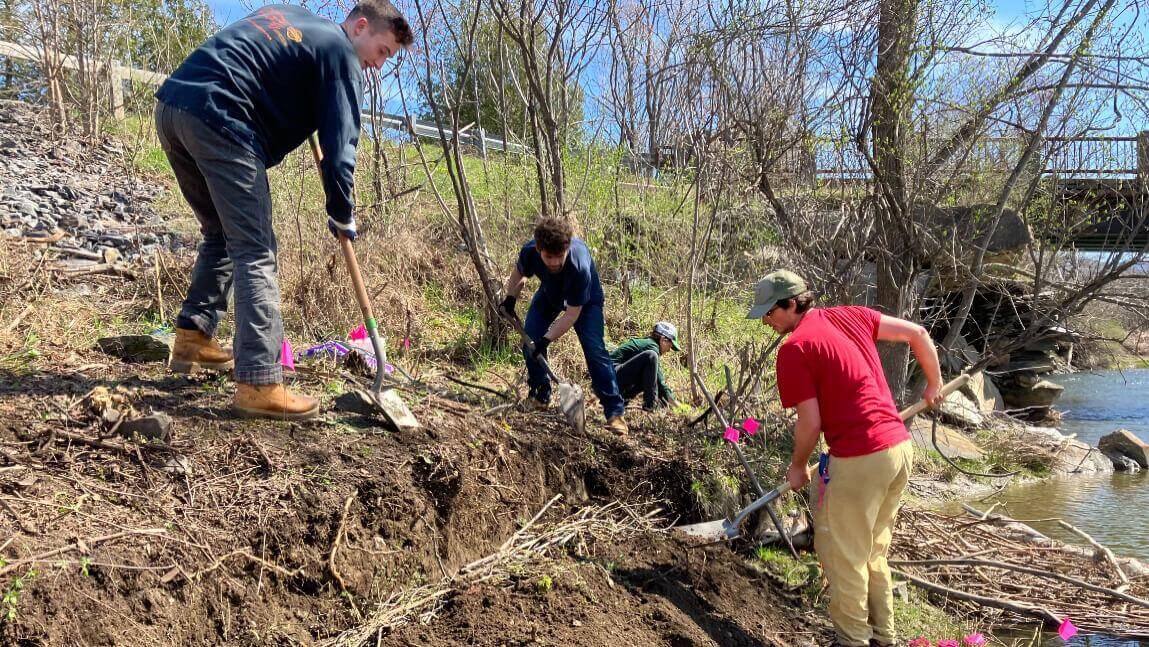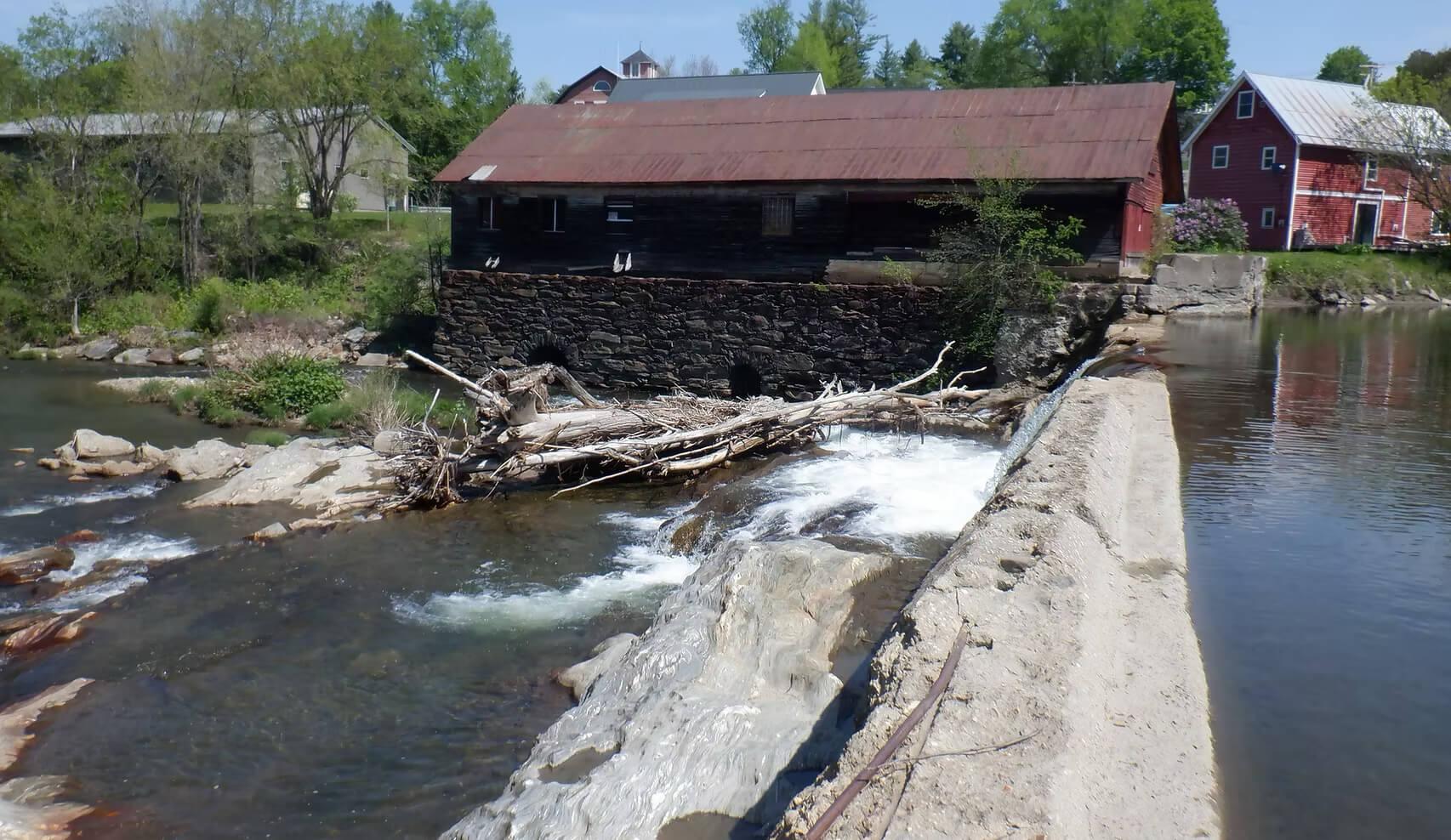The Need
Invasive Japanese Knotweed has overrun the banks along much of the Little River, which extends from its headwaters in the Mansfield and Worchester ranges to the Waterbury Reservoir. Knotweed outcompetes native riverbank vegetation, causing several problems.
It reduces insect populations, which in turn causes a decline in the fish, birds and mammals that rely on those insects for food. And it harms the stability of the land along the river.
"Knotweed does not have a deep root system, so there's lots of erosion associated with it," says Jackie Pratt, Genera Manager for Stowe Electric Department. "So we're losing important shoreline, it's impacting the health of the river, and the resulting sediment will cause problems for our hydroelectric project."
Stowe Electric is revitalizing a historic hydroelectric generating plant in the nearby village of Moscow to provide low-cost renewable energy to local residents. Reducing that sediment runoff by stabilizing the banks of the Little River will play an important role in the successful operation of the facility.
The Solution
Stowe Electric has engaged the help of UVM researchers and students for several semesters to study the knotweed problem, design a plan to restore the riverbanks, and begin to implement that plan by destroying the knotweed and replacing it with native species.
Project partners used the grant from the Leahy Institute to continue that work, and, importantly, to create from their efforts a scalable, replicable plan that other municipalities and nonprofits can use to tackle similar invasive species challenges.
"I think these interconnected pieces, where we have multiple touch points across multiple groups at UVM, all coalescing on this one site along the Little River, is really indicative of the kind of impact the Leahy Institute can have in rural Vermont. And hopefully beyond, as we take these learnings and expand them to other places." - Jackie Pratt, General Manager, Stowe Electric Department

The Partnership
The project was founded on an ongoing partnership between Stowe Electric Department and UVM's Rubenstein School of Environment and Natural Resources to address the knotweed problem. In the early stages, Rubenstein students reviewed the river-frontage for threats from seasonal flooding, a changing climate, and the decrease in natural species. They then developed a scope of work to plant species to stabilize the bank, remove knotweed and discourage regrowth, and plant river-friendly species.
The Intervale Center provided consulting on the project, and was a valuable source for locally grown, native tree species for replanting the riverbank.
Vermont Urban and Community Forestry Program helped to fund these efforts, provided expert advice to the student groups, and mapped the property for native and endangered tree species.
Lamoille County Planning Commission donated billable hours to offer professional landscaping plans for the parcel designed to slow down water runoff into the river.
The Stowe Historical Society consulted on the historic Moscow Mills site of the hydropower project and connected project partners to longtime Stowe residents who could offer insights and stories about the history of the Little River in that area.
The project also benefitted from the engagement of Stowe Trails Partnership, Stowe Land Trust, Town of Stowe, and residents of Moscow Village.
Video
Jackie Pratt, General Manager for Stowe Electric Department, joined Tricia Coates, Director of the Leahy Institute, for a brief discussion about this project:
Project Details
| Community Partners: | Town of Stowe Electric Department The Intervale Center Vermont Urban and Community Forestry Program Stowe Trails Partnership Stowe Land Trust Stowe Historical Society Adjacent landowners Lamoille County Planning Commission Moscow Village |
| UVM Partner: | UVM Rubenstein School of Environment and Natural Resources |
| Amount: | $10,000 (Capacity Grant) |
| Primary Region: | Lamoille County |
| Focus Areas: | Resilient Energy Systems, Healthy Ecosystems |
